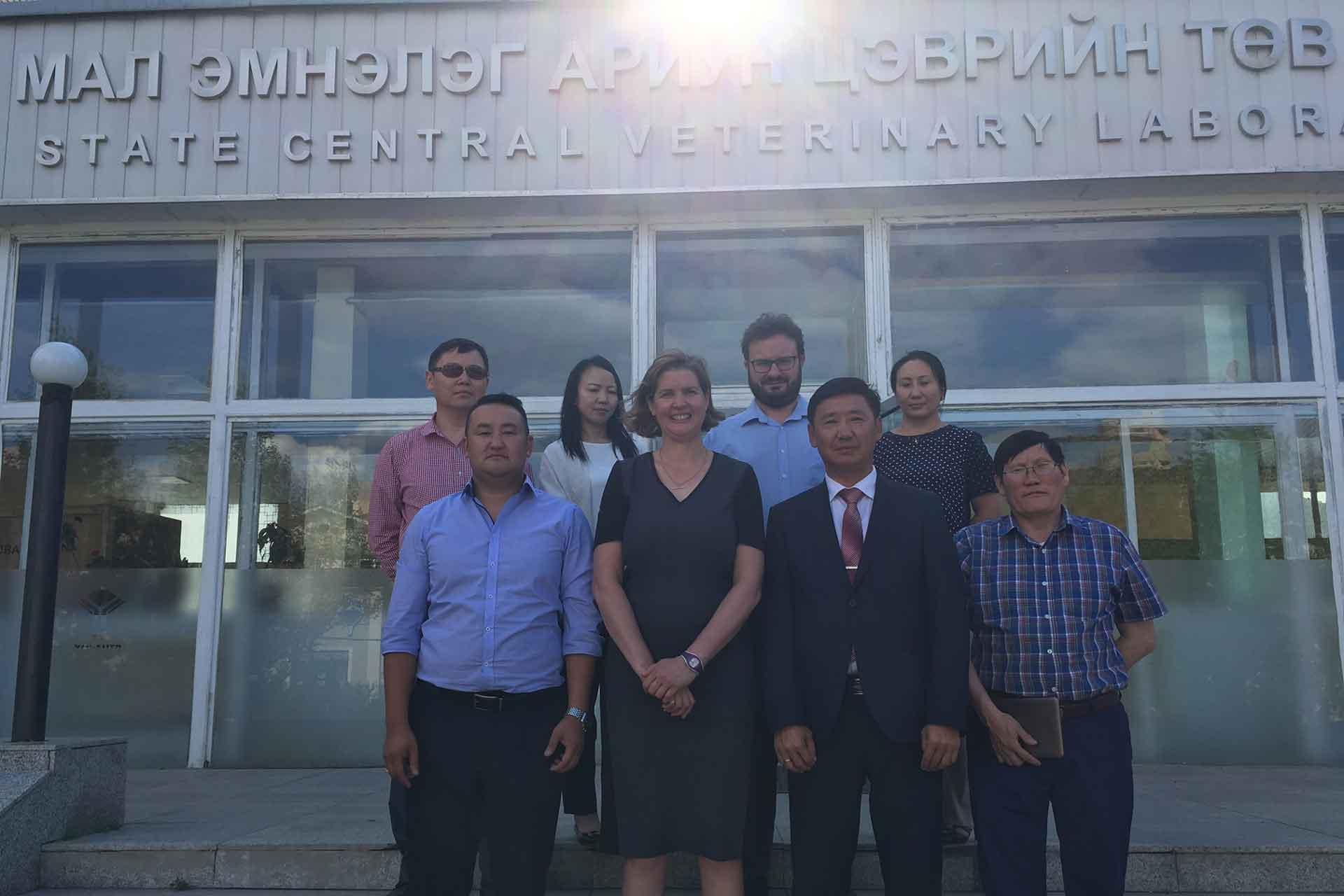Dr Pip Beard and Dr Nick Lyons from The Pirbright Institute recently attended a workshop in Ulaanbaatar, Mongolia, which focused on the economic impact of sheeppox, a severe viral disease of sheep caused by infection with sheeppox virus.
The virus causes classic “pox” lesions to occur on the skin and internal organs of the animal, and is often fatal. Sheeppox can be found across Africa, the Middle East, India and Asia, including Mongolia, which is currently suffering from a large outbreak of sheeppox, encompassing much of the eastern half of the country.
Pirbright is an internationally recognised centre for sheeppox virus research and diagnosis and scientists here actively collaborate with various organisations to share knowledge and expertise about sheeppox, to further the control of the disease. Pirbright is the OIE (World Organisation for Animal Health) reference laboratory for sheeppox, and receives samples for confirmatory diagnosis of suspected cases across Africa and Asia.
Pirbright researchers are working together with scientists from the State Central Veterinary Laboratory (SCVL) in Ulaanbaatar and the Veterinary Animal Breeding Agency (VABA) of Mongolia to calculate the economic cost of the sheeppox epidemic in Mongolia. The recent workshop focused on evaluating the direct costs such as loss of animals, loss of production and reduced market value of survivors, as well as indirect costs such as the cost of vaccination and other aspects of the current control strategy.
The workshop is part of a larger programme of work funded by a BBSRC Impact Acceleration Account award to support knowledge exchange. This research will enable policy-makers to use economic rationale to design the most suitable disease control programme for sheeppox in Mongolia, with the potential to be expanded to outbreaks in other countries.
Dr Pip Beard, leader of the Large DNA Viruses Group at Pirbright, said: “Understanding the economic costs of a disease outbreak is crucial when formulating a control strategy. This collaboration will enable us to pool our knowledge of sheeppox, and provide policy makers with an accurate estimate of cost of the disease, therefore helping them decide which methods of control are economically justified, and will lead to reduced losses to the Mongolian economy.”
